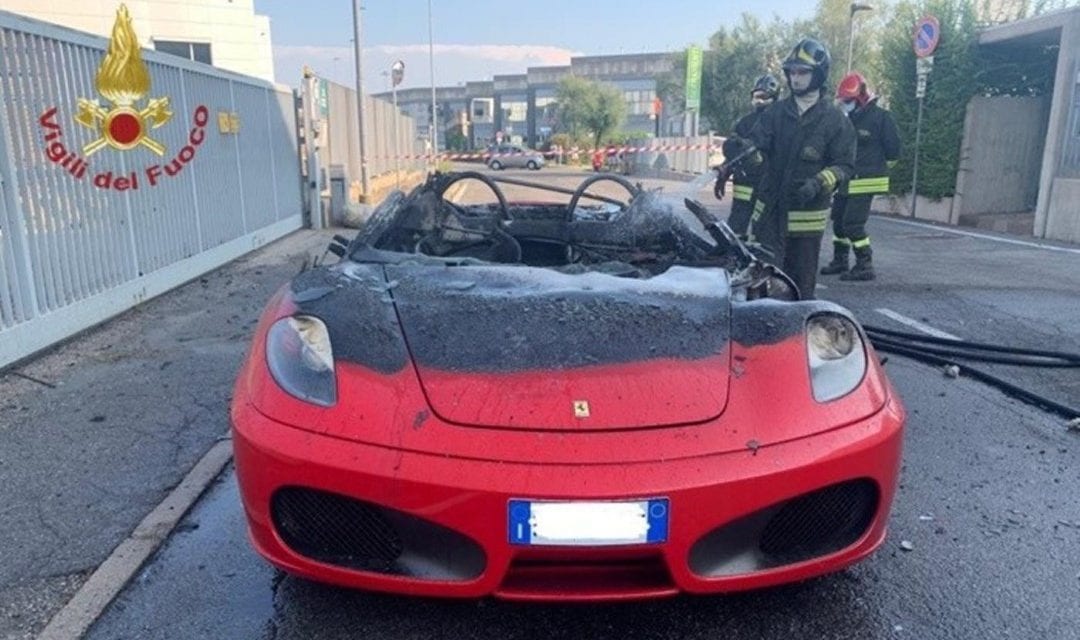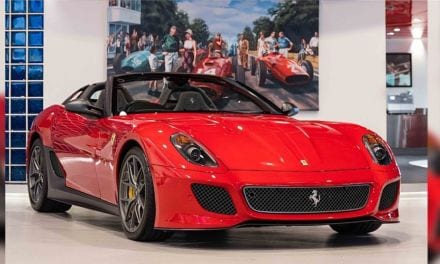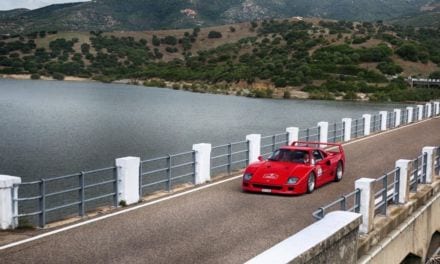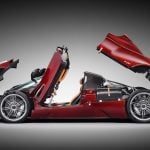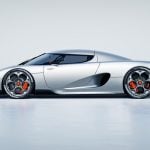It must have been an exciting moment for one lucky man as he took the keys to his new Ferrari. Owning an F430 – one of the most popular Ferrari’s of all time and a distinctive design with its ‘Shark Nose’ styling harking back to the 1960’s F1 cars – is a dream for most of us. For the unnamed man in Italy, the dream come true was about to become a nightmare.
Resplendent in traditional red, the F430 was taken for a drive by the new owner on the evening of July 23rd, and while on the via dell ’Aeronautica 10 in Curno, smoke was noticed emerging from the engine bay. As we have seen on a number of occasions, supercars tend to catch fire very quickly, and that was certainly the case here.
The local fire brigade attended the scene and brought everything under control, but the car – as shown in photographs – is left a smouldering, blackened wreck with the upper part of the bodywork completely lost. We cannot imagine the feeling the owner must have endured, watching his new toy ravaged by fire.
No Cause Known
The details of the incident are somewhat sketchy at the moment as little has been said, but at the time of writing the cause of the fire is unknown. As far as we know there were no injuries involved, just a forlorn burning red Ferrari. This is not the first story Supercartribe has carried regarding spontaneously combusting supercars, and what we do know is that many of the exotic materials used in the construction of the Ferrari F430 and many of its kind are not fire-resistant.
We would expect there to be some liability on the part of the dealer, who had handed the keys to the used Ferrari to the new owner just a couple of hours before the incident, and if we hear any further news we will update our readers. Meanwhile, there’s one less F430 om the roads of Italy, which is a great shame.

